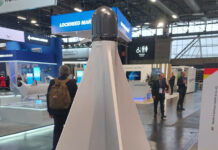IMI Systems introduces a hardware system protects computer-controlled military hardware from cyber attack The ‘Passive Buffer’ protects computer-based and computer-controlled systems and applications.
Ensuring full and continuous operation continuously monitors and controls in real-time the data flow between the protected system and peripheral elements and components, ensuring only legitimate messages, controls, and protocols are implemented. This Passive Buffer supervision ensures that all the system’s operations are in line with the parameters, logic and sequence order defined by the system’s engineers.
Typical systems that can be protected by the Passive Buffer system are weapons and ammunition, computerized components of critical systems’ infrastructure, manned or unmanned vehicles, aircraft, and vessels, and various critical computerized components in infrastructures, medical systems, and industrial shop floors.
The system’s setup is defined by a set of rules and filters that determine the configuration, content, context, and role for each protocol. Built-in hardwired identification for sub-system and users eliminates tampering by unauthorized operators. Apart from the level of protection to systems and functions, the Passive Buffer also prevents access to highly classified core level elements in the protected system.
Once activated, the Passive Buffer continuously monitors the system, analyze and characterize the integrity and status of protected resources’ and protocols (proprietary) in real time. In case of a suspicion that a protected system being compromised, precautionary measures are activated, thus limiting adverse behavior. The system can manage and control the relevancy of commands and content of such commands, to mitigate dysfunctions. For example, commands’ contents logic, processes controls, and identification.
While the system would prevent automatic operation that could endanger the user or the unit, it also has certain levels of manual override to enable users to continue and operate the systems in combat. In such conditions, the system allows certain roles-based hierarchies to proceed, regardless of the protected system’ identification settings.




















